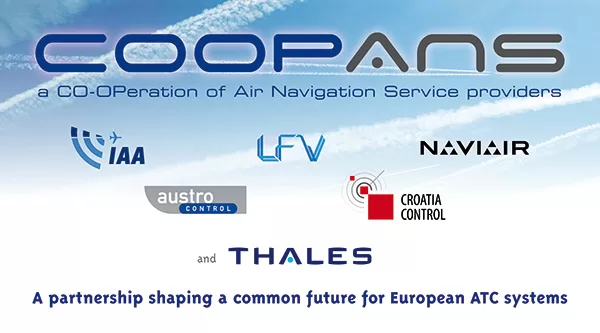One more important step towards harmonization of European Air Traffic Control has been taken with the implementation of COOPANS latest software version compliant with international standards in the Air Traffic Control Centers in Vienna and Copenhagen. The two control centers are the first of seven in five European countries that are going to have a fully harmonized COOPANS version before the end of 2014.
The Air Navigation Service Providers Austro Control and Naviair in Austria and Denmark have successfully upgraded the technical systems in their control centers in Vienna and Copenhagen. The two ANSPs are partners in the COOPANS alliance and the three other members, IAA, LFV and Croatia Control will transition to the same software version in 2014, at this point the same operational software based on Thales TopSky ATC system will be running in seven Control Centres. The harmonization is a unique step forward in European Air Traffic Control, where most of the 63 European control centers so far have been developed individually with customized and different systems. Through the partnership in COOPANS the five members of the alliance has taken the lead in the harmonization process with the decision to implement consistent systems in their seven control centers.
The activation of this version in the Vienna and Copenhagen centers was carried out without delays or other inconveniences for the air traffic. According to the plan the control centers in Zagreb (Croatia), Shannon and Dublin (Ireland) and Malmo and Stockholm (Sweden) will be upgraded during the first part of 2014 without impacting their operations. Hereafter new upgrades will be activated in parallel in all seven centers and the harmonization will be maintained.
The COOPANS alliance was established in 2006 by the partners IAA (Ireland), LFV (Sweden) and Naviair (Denmark) with Thales as supplier. The alliance is open for new members and Austro Control (Austria) joined in 2010 followed by Croatia Control (Croatia) in 2011.
The partners expect to reduce system development costs by 30 per cent compared with the cost each partner would incur if it had to develop the technology independently. The COOPANS partners are also benefiting from additional operational cost reductions, through joint working concepts and other operational initiatives based on a harmonized working platform.
In addition to savings, COOPANS meets the EU’s goal concerning the harmonization of ATM systems in Europe. Being a part¬ner in COOPANS thus helps the companies to meet a wider range of existing and future EU regulatory requirements in good time, including the performance requirements, and to develop in line with SESAR. COOPANS also underpins industry and ICAO requirements.
Furthermore the harmonized system in the 7 control centers contributes to climate and environmental improvements. Harmonization eases the effort to implement actions for improved flight efficiency leading to shortening distance and flying time. This reduces fuel consumption and emission of greenhouse gasses. One example of this is implementation of Free Route Airspace.
